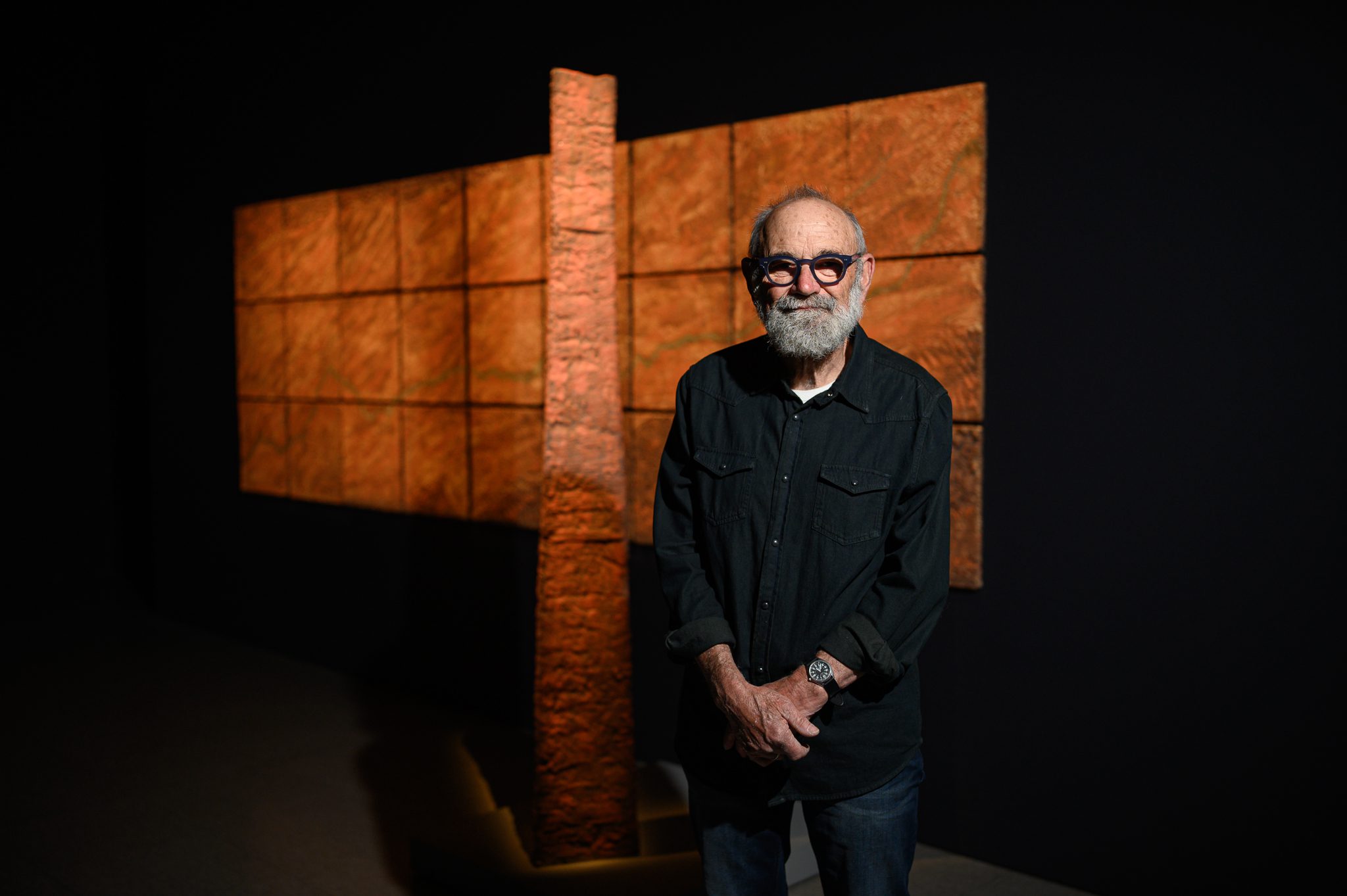By Louise Rae
Stewart Scambler’s love for Western Australia shines through in his stunning wood-fired works in the 2023 John Stringer Prize, exhibited at the John Curtin Gallery from 3 November to 10 December 2023. The exhibition is an invitation-only non-acquisitive annual event for Western Australian contemporary artists. Scambler’s win in this forum is a huge validation for ceramics within a contemporary art context.
Upon entering the darkly lit hallway to the exhibit, and just as your eyes are getting acclimated, you suddenly see the piece in full, and it takes your breath away. Yindjibarndi Country is 27 individual wood-fired earthen squares arranged in a 9 x 3 landscape configuration, making the entire panel 4.22 meters wide and 1.4 meters tall. Jutting up in front of this display as if to strike an exclamation point to the work is a 2.03 meter angular clay column. The display is expertly lit, showing its rich colours and textures along with marks made by the makers’ own hands.
Taking it all in from a distance, the contemporary and conceptual feel of the piece comes through. Upon closer inspection, the textures beguile with subtle sparkles that change and shimmer across the vast canvases of fired earth. A fine river of smooth pale green breaks across the surface giving unity to the whole.
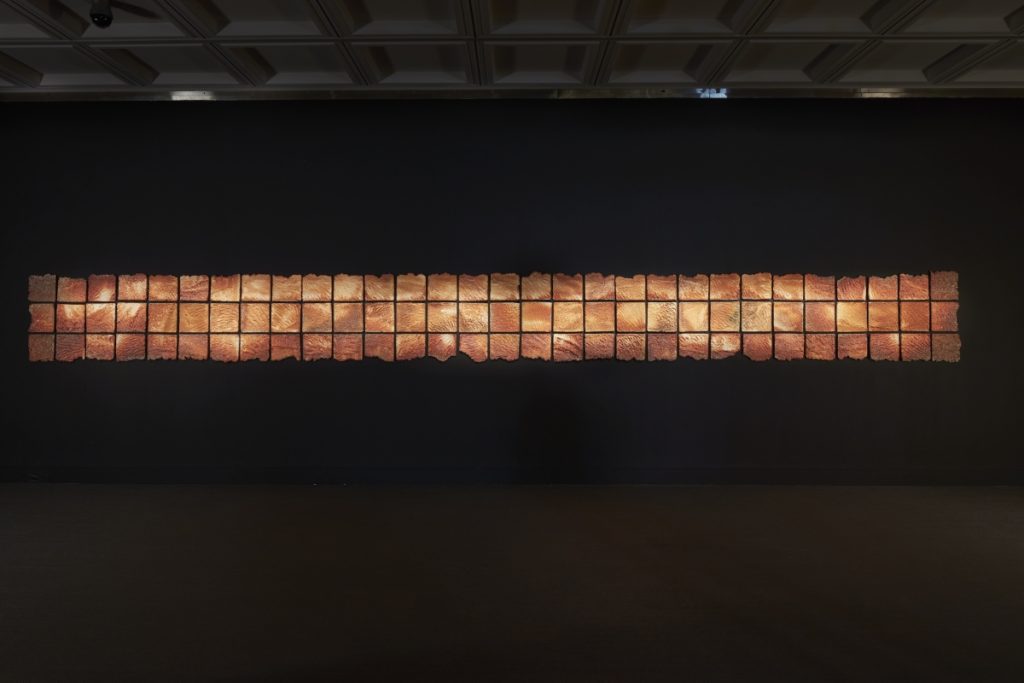
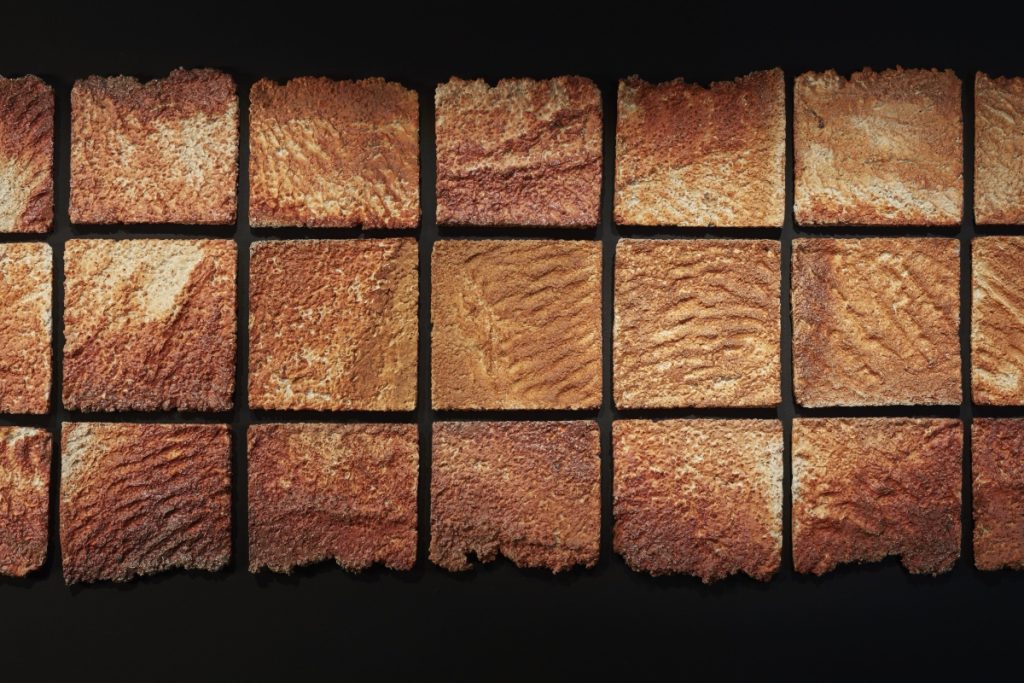
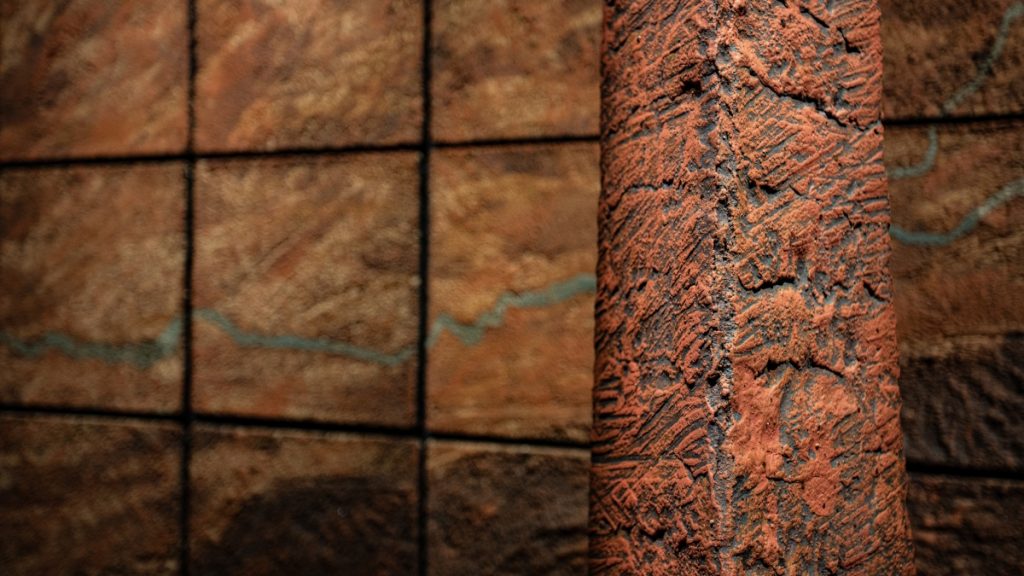
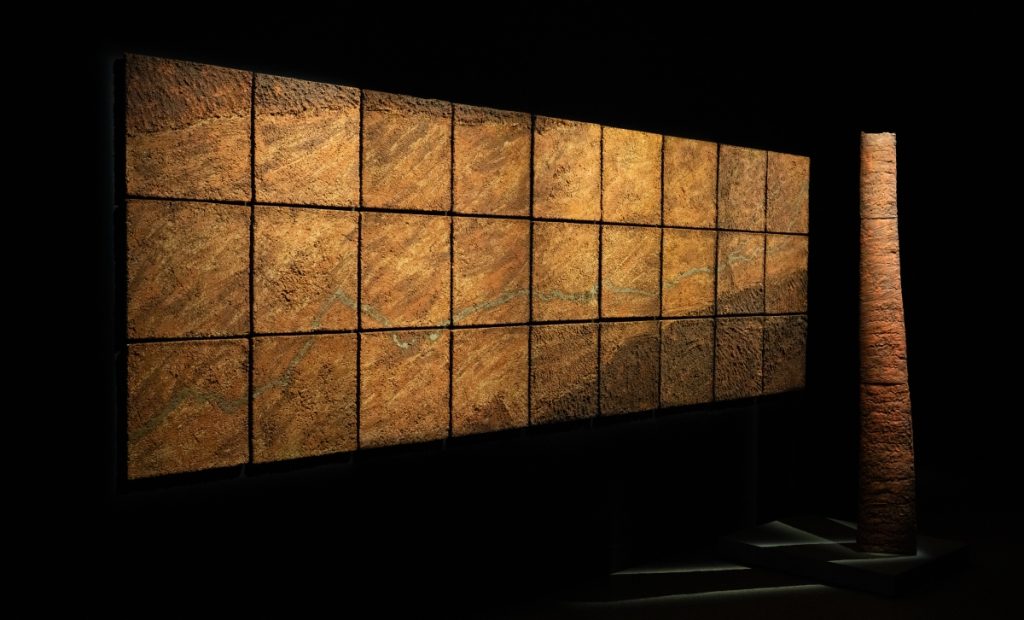
For Stewart, this piece is about “the land and its importance both as home and driver of cultural identity “.1 “Yindjibarndi Country reflects my response to journeying in the land surrounding Yandanyirra (the Fortescue River)”, says Scambler. The works are made with local brick clay plus iron ore fines and ochres gifted by a Yindjibarndi elder. Into this he added the accumulated dust from his vehicle from road trips on the land.
Showing next to the works is a short film by Matthew Bettinaglio called Stewart Scambler on the Land, 2023.2 Filmed on 16mm film, Bettinaglio shows the laborious process by which Scambler makes the clay, creates works, and then fires them with wood he grows and chops himself on his land in York. The raw materials, along with the wood-fired process, create uncertainty in the results. Scambler says, “I work with uncertainty to explore how the changes in land use and population manifest themselves.”3
These themes are timely as the Yindjibarndi people of WA’s Gascoyne Region are currently giving testimony in federal court about the importance of the land that is being mined without permission by FMG, Fortescue Mining Group. The Yindjibarndi Elders have lamented, among other things, that “ochre and other sacred materials used for men’s ceremonies had been destroyed and “shipped to China.”4 By using materials from this particular Country, Scambler is engaging us in a very emotive way of the importance of place and the priceless connection it provides us humans.
Scambler has established himself as a prominent Australian wood-fire practitioner and teacher. He has taught as a sessional lecturer for TAFE, Edith Cowan and Curtin University. He has delivered numerous workshops in Australia and abroad, and has tutored at the Fremantle Arts Centre since the early 80’s. His work is held in private and institutional collections across Australia and overseas.
Featured image by Brad Coleman
Images 1-2 by Robert Frith
Images 3-4 by Brad Coleman
Footnotes
- 2023 John Stringer Prize pamphlet, (2023), Stewart Scambler Artist Statement
- Bettinaglio, Matthew, (2023), Stewart Scambler | On The Land • 16mm Bolex Film, Youtube
- 2023 John Stringer Prize pamphlet, (2023), Stewart Scambler Artist Statement
- Yindjibarndi Nation News, (2023), Before the Federal Court, Yindjibarndi Bristle With Pride and Determination, ISSUE 03 | NOVEMBER 2023, Website


